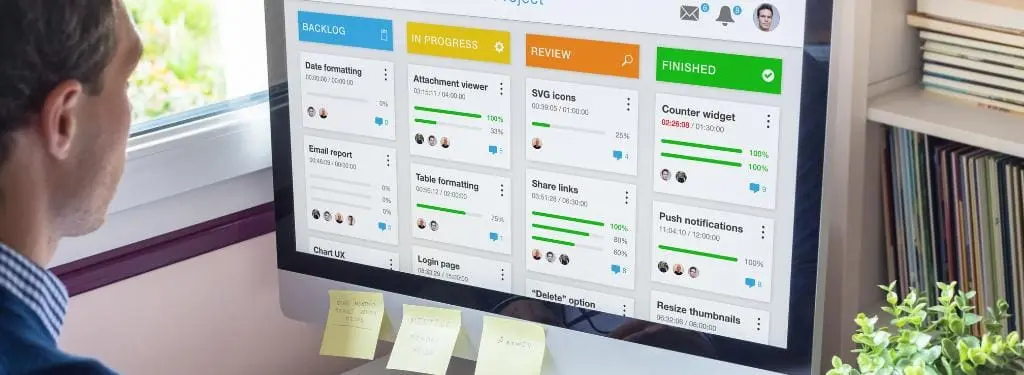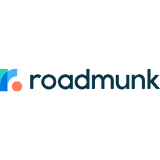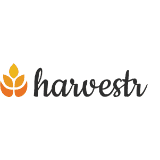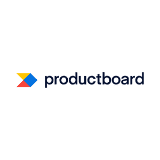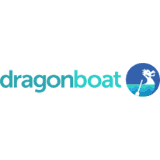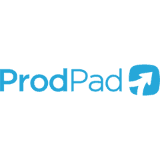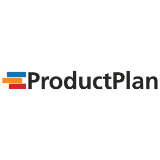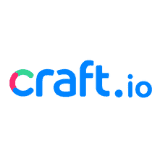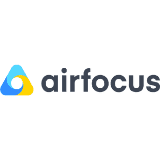- Free Version: Available for teams of up to 10
- Pricing: Premium plan $24/month (with free 30-day trial period)
- Platforms supported: Available on mobile app (iOS and Android) or a web-based software
Why use SafetyCulture?
SafetyCulture is a free product management software that empowers product teams to improve their overall monitoring and execution processes toward user-centric, profit-generating product development. Product managers from all industries can leverage SafetyCulture’s features to ensure every step of the product lifecycle aligns with the organization’s standards and market demands.
Features:
- Have your own forms converted into digital templates and use them during product planning, monitoring, and iteration stages.
- Build process and task workflows so that document sharing, visibility, and progress are optimized for everyone involved in the product management phase.
- Set a scoring system for your product ideas to determine prioritization strategies.
- Create collaborative actions to empower your teams in process ownership and get more things done efficiently.
- Schedule product management process inspections to ensure each step follows quality standards.
- Proactively resolve issues that block or may affect your product team’s progress in implementing and prioritizing product development tasks.
- Export, visualize, and compare relevant information using the SafetyCulture Exporter and powerful integrations such as Tableau and PowerBI to access all product management data, worker information, and overall quality management and process improvement insights in one place.
- Improve team alignment on any progress- and product-related tasks and updates as well as Standard Operating Procedures (SOPs) using Heads Up.
- Create and deploy engaging mobile courses via Training by SafetyCulture to provide product training to your respective teams so that all processes are streamlined and best practices are implemented.
- Provide media documentation and evidence such as photos and videos to your product management reports and organize them in SafetyCulture’s secure cloud storage.
- Utilize the Analytics dashboard to benchmark your organization’s product management efforts toward quality assurance and continuous improvement.
Why use Roadmunk?
Roadmunk enables you to align your whole organization through intuitive roadmap planning as part of streamlining your overall product management system. Furthermore, the software’s straightforward features are helpful in centralizing product strategy collaboration.
Features:
- Timeline roadmap to visualize strategies and create alignment around initiatives, objectives, and milestones
- Data filtering for different roadmap views
- Seamless integration capabilities
- Free Version: None
- Pricing: Starts at $19/user/month (A 14-day free trial is available for all plans)
- Platforms supported: Web
Why use Harvestr?
As an all-in-one product management software, Harvestr is built for impact-driven team collaboration toward building successful products. Harvestr also integrates with widely used project management tools such as Jira and Trello.
Features:
- Opportunity prioritization for informed product decisions
- Feedback hub for all customer insights and system data
- Engaging product roadmaps
- Free Version: Available
- Pricing: Starts at $65/editor/month, billed annually (A 14-day free trial is available)
- Platforms supported: Web
Why use Productboard?
As a customer-driven product management software, Productboard empowers companies to create products that matter—and customers will love. These are possible through its features to uncover customers’ actual needs and incorporate them into every product decision.
Features:
- Timeline-based product roadmap creation, sharing, and organization
- Product prioritization tool
- Customer insights and collaboration integrations
- Free Version: None
- Pricing: Starts at $20/maker/month, billed annually (A 15-day free trial is available)
- Platforms supported: Web
Why use Dragonboat?
Dragonboat is an outcome-focused roadmapping platform used in connecting strategies, customer needs, and resources in centralizing feedback and progress tracking. Back up each product decision with data and align products with strategic factors using this software.
Features:
- Product ideas, requests, feedback, and insights centralization
- Product decision allocation and prioritization
- On-demand stakeholder updates
- Free Version: Available for non-profit organizations or startups based on qualification
- Pricing: Starts at $69/user/month, billed annually (free trial Available upon request)
- Platforms supported: Web
Why use Canny?
Mainly functioning as a tool used for capturing, organizing, and analyzing customer feedback toward improved product decision-making, Canny is a product management software that helps product leaders, managers, and teams to make impactful decisions to build better products.
Features:
- Customer and teammate feedback management
- Work prioritization and product roadmapping
- Changelog for product update documentation and engagement
- Free Version: Available
- Pricing: Starts at $360/month for the Growth plan, billed annually (with free trial)
- Platforms supported: Web
Why use ProdPad?
Optimize strategy planning, organize ideas and initiatives, and address customer needs in your overall product management system using ProdPad. This product management software offers a modular subscription service, letting you pay only for the features you need.
Features:
- Impact vs. effort chart for managing ideas and prioritizing decisions
- Lean product roadmapping
- Customer feedback management
- Free Version: None
- Pricing: Starts at $24/module/editor/month or $72/all 3 modules/editor/month, billed annually (a minimum of 7-day free trial is available)
- Platforms supported: Web and Windows on-premise
Why use ProductPlan?
Also functioning as a product roadmap software, ProductPlan is a tool used to plan, visualize, and share product strategies and collaborative roadmaps. Using this product management software, you can access everything you need to align your team toward high performance.
Features:
- Roadmaps (timeline, list, and table layouts)
- Goal setting and milestone tracking
- Flexible integrations
- Free Version: None
- Pricing: Starts at $39/editor/month, billed annually (a 14-day free trial is available)
- Platforms supported: Web
Why use Craft.io?
A start-to-end type of product management software, Craft.io lets product teams understand customer needs, articulate decision-making, and establish clear product processes. In addition, this tool helps in building transparency and alignment across the organization.
Features:
- Product strategy roadmapping, documentation, and prioritization
- Capacity planning for resource management
- Feedback portal
- Free Version: None
- Pricing: Starts at $39/user/month, billed annually (a 14-day free trial is available)
- Platforms supported: Web and desktop
Why use airfocus?
airfocus is a sought-after modular product management software tool that improves processes in building market-facing products. Also, its flexible functionality makes it easy for its users to customize the platform according to their product management needs.
Features:
- Easy-to-use roadmap builder
- Custom prioritization framework
- Product feedback centralization
- Free Version: None
- Pricing: Starts at $19/editor/month, billed annually (a 14-day free trial is available)
- Platforms supported: Web
What is Product Management Software?
Product management software is a digital tool used by product managers, product lifecycle specialists, and product teams to implement some or all of the phases involved in the whole product lifecycle—planning, researching, ideation, design, development, launching, assessment, and improvement. Further, product management tools are crucial in centralizing processes to develop and manage products to align them with customer needs, generate more profit, and sustain efficiency.
Importance
Regardless of the business size and industry, product management can be complex and challenging. One notable factor is the need to integrate and optimize systems toward effective team alignment in ensuring only the best products are built for customers.
Using product management software helps teams and organizations accomplish the following key tasks:
- Turn ideas into action plans
- Understand user behavior and gather customer feedback to integrate them into product development and improvement processes
- Improve progress visibility across the board
- Streamline task and project management
- Make workplace communication and collaboration more effective
Further, it’s important to have product management software tools for all the phases involved in your organization’s product management system. Some of such stages are the following:
- Opportunity identification and validation
- Design and prototyping
- Roadmapping
- Feature development
- Product launch
- User research, tracking, and analysis
- Customer feedback and survey
- Team communication and collaboration
- Project management (workflows, tasks, sprints, and prioritization)
- Flowcharting
- Process documentation
- Data management and analytics
Key Features
Top product management software must have these features:
- Idea capturing and roadmapping
- Product management templates
- Goal setting and tracking capabilities
- Project, task, and workflow management
- Milestone tracking
- Automation
- Team collaboration
- Data and document sharing and storage
- Reporting and analytics
- Integrations
Top Product Management Software Comparison
To help you choose the best software for product management, here’s a quick overview of our best 10:
- Best Overall: SafetyCulture
- Best for End-to-end Product Strategy Roadmapping: Roadmunk
- Best for B2B SaaS Organizations: Harvestr
- Best for Customer Roadmapping: Productboard
- Best for Product Leaders: Dragonboat
- Best for B2B Software Companies: Canny
- Best for Modular Product Roadmapping: ProdPad
- Best for IT Teams: ProductPlan
- Best for End-to-end Product Management: Craft.io
- Best for Modular Product Management: airfocus
You may also use this table for the comparison of free version availability, pricing of paid plans, and mobile app capability:
| Product Management Software | Free Version | Paid Plan | Mobile App |
| SafetyCulture | Yes | $19/month/10 users | Yes |
| Roadmunk | None | $24/user/month | No |
| Harvestr | Yes | $65/editor/month* | No |
| Productboard | None | $20/maker/month* | No |
| Dragonboat | Yes** | $69/user/month* | No |
| Canny | Yes | $360/month* | No |
| ProdPad | None | $24/module/editor/month* | No |
| ProductPlan | None | $39/editor/month* | No |
| Craft.io | None | $39/user/month* | No |
| airfocus | None | $19/editor/month* | No |
* billed annually
** for non-profit organizations or startups based on qualification
Check out these ready-to-use product management checklist templates you can download and customize using SafetyCulture:
